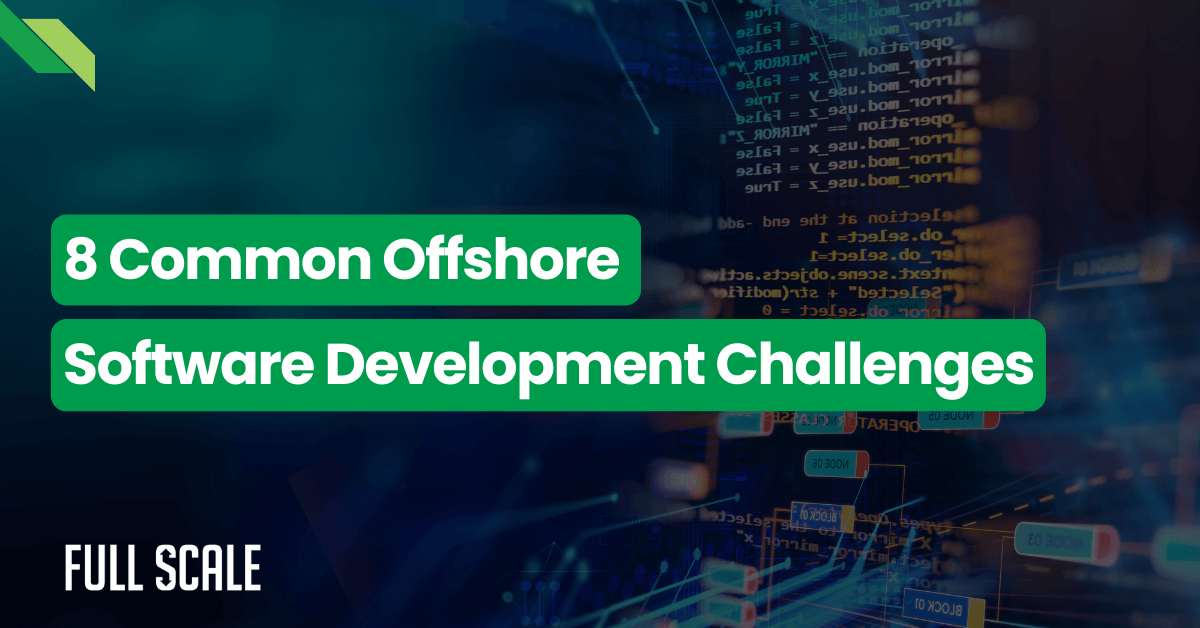Last Updated on 2025-06-29
Strategic hiring for technical debt involves bringing specialized offshore developers to reduce product backlog and eliminate code debt simultaneously.
This approach delivers 40-60% faster feature delivery within 90 days. Companies implementing strategic hiring for technical debt see immediate velocity improvements and long-term cost savings.
Engineering teams face a critical challenge in 2025. According to McKinsey’s 2024 Developer Productivity Report, 68% of enterprises report technical debt as their primary velocity blocker. Gartner estimates organizations waste $3.61 for every $1 of IT spending due to technical debt accumulation.
Product backlogs grow 200% faster than team capacity while technical debt compounds exponentially. Strategic offshore hiring offers the most effective solution path forward.
The Technical Debt-Product Backlog Vicious Cycle
Technical debt creates a self-reinforcing cycle that cripples development teams. Each delayed refactoring decision adds complexity to future features.
Teams spend more time working around problems than solving them. This cycle accelerates until productivity grinds to a halt completely.
Enterprise software development faces unique challenges when technical debt accumulates. Legacy systems become increasingly fragile with each modification.
Development team burnout and technical debt become a critical retention issue. Teams lose their best developers to less stressful environments.
Why Your Product Backlog Keeps Growing Despite Team Scaling
Technical debt slows feature development by 40-70% across enterprise software development projects. New features take longer in debt-heavy codebases. Each sprint delivers fewer story points than planned.

The compounding effect creates an ever-widening gap between capacity and demand. Teams add developers but see minimal velocity improvements. Bug fixes consume increasing sprint portions, while product backlog management hiring becomes critical.
The Real Cost of Delayed Technical Debt
Technical debt impacts extend far beyond slow feature delivery. Development teams experience 3x longer cycles for standard features. Simple changes require extensive regression testing in enterprise application development challenges. The hidden costs multiply exponentially over time.
Financial analysis reveals staggering impacts across multiple dimensions. Organizations consistently underestimate true technical debt costs. The cumulative effect often exceeds entire annual development budgets. Strategic offshore development offers the fastest path to recovery.
| Impact Category | Average Annual Cost | Measurement Method |
| Development Speed | $1.2M in delayed features | Story point velocity tracking |
| Bug Rates | $800K in support costs | Defect density per KLOC |
| Developer Turnover | $600K in replacement costs | Exit interview analysis |
| Revenue Impact | $2M in lost opportunities | Feature delivery analysis |
| Technical Debt Interest | $900K in maintenance | Code complexity metrics |
| Customer Churn | $1.5M in lost revenue | NPS correlation analysis |
Post-layoff technical debt hiring becomes especially critical in 2025. Teams reduced during economic uncertainty left massive debt behind. The remaining developers struggle with undocumented systems and incomplete projects. When to hire developers for technical debt becomes obvious when velocity drops below 50%.
Strategic Hiring for Technical Debt: The Four-Quadrant Framework
Strategic hiring for technical debt requires systematic team composition and skill allocation. Full Scale’s matrix identifies four distinct hiring categories for maximum impact. Each quadrant addresses specific technical debt challenges through targeted recruitment. The framework evolved from analyzing 200+ successful debt reduction projects.

Understanding what is strategic hiring for technical debt starts with recognizing different skill needs. Not all developers can handle legacy system refactoring effectively. Teams need specialized expertise for different debt categories. The matrix guides optimal resource allocation decisions.
Product Backlog Management Hiring Through Strategic Quadrants
Each quadrant addresses specific challenges within your technical debt landscape. The right mix accelerates both debt reduction and feature delivery. Strategic placement ensures optimal resource utilization.
Quadrant 1: Technical Debt Reduction Offshore Development (Specialists)
- Target: Critical system refactoring and legacy system modernization
- Profile: Senior developers with 8+ years of experience in architecture debt solutions experience
- Timeline: 30-60 days for measurable impact
- ROI: 200-300% within 6 months
Quadrant 2: Engineering Team Scaling Technical Debt (Full-Stack Teams)
- Target: Product backlog clearance and feature development bottlenecks
- Profile: Offshore full-stack developers with expertise in agile scaling challenges
- Timeline: Ongoing engagement with sprint planning optimization
- ROI: 150-200% cost savings vs. local hiring
Quadrant 3: CTO Hiring Strategy Technical Debt Management (Architects)
- Target: Scalable enterprise software architecture and system redesign
- Profile: Senior architects for technical debt prioritization framework
- Timeline: 90-180 days for comprehensive roadmaps
- ROI: 400-500% long-term efficiency gains
Quadrant 4: Remote Team Integration (Hybrid Teams)
- Target: Documentation and cross-functional team building
- Profile: Mixed onshore/offshore for development capacity planning
- Timeline: 60-90 days setup with team productivity metrics
- ROI: 80% reduction in onboarding time
Product Backlog Prioritization: The 70/30 Sprint Rule
Effective product backlog refinement balances immediate needs with long-term health. Strategic hiring for technical debt enables teams to maintain both allocations simultaneously. This approach prevents accumulation while addressing existing technical debt. The 70/30 rule transforms how teams approach sprint planning.
What is product backlog management in this context? It’s the systematic approach to balancing feature delivery with debt reduction. Product backlog vs. sprint backlog decisions become clearer with proper allocation. Teams achieve sustainable velocity through disciplined prioritization.
Implementing the 70/30 Rule with Strategic Hiring
The 70/30 rule emerged from analyzing high-performing distributed development teams:
- 70% Sprint Capacity: Feature development (product backlog items)
- 30% Sprint Capacity: Technical debt remediation
Strategic hiring for technical debt provides capacity for both priorities. Offshore software development teams handle routine features, while core teams focus on architecture. The combined effort accelerates product delivery.
Technical Debt Triage for Sprint Backlog Planning
Not all technical debt requires immediate attention. Effective triage helps prioritize during Scrum product backlog refinement. Full Scale’s triage system provides clear decision criteria for agile product backlog management. Teams can quickly categorize debt items during backlog grooming sessions.
Which of the following is an activity of product backlog management? Debt triage ranks among the most critical. Product backlog items must include both features and debt work. The product backlog definition expands to encompass technical health metrics. Who is accountable for ordering the product backlog must understand the debt implications.
| Priority Level | Response Time | Examples | Impact on Velocity |
| Critical | Fix Now | Security vulnerabilities | Blocks all development |
| High | Next Sprint | Performance bottlenecks | Slows features 50%+ |
| Medium | Within Quarter | Code debt management | Reduces efficiency 25% |
| Low | When Capacity Allows | Style inconsistencies | Minor productivity impact |
Product backlog prioritization techniques must account for technical debt tax. Every product backlog item carries hidden debt overhead in legacy systems. Teams using product backlog templates should include debt estimation fields. The product backlog is ordered by business value and technical risk combined.
ROI Calculations: Strategic Hiring for Technical Debt
Financial analysis drives executive support for strategic hiring for technical debt initiatives. CTOs must present compelling business cases for technical debt reduction offshore development. Real-world data supports aggressive hiring strategies. Cost-benefit analysis of technical debt hiring shows immediate returns.

Technical debt reduction budget planning requires understanding total cost impacts. Organizations often focus solely on developer salaries. The complete picture includes productivity losses, maintenance overhead, and opportunity costs. Strategic hiring for technical debt addresses all these factors simultaneously.
Cost-Benefit Analysis for Offshore Development
Direct cost comparisons show immediate savings:
- Local Developer Cost: $15,000-20,000/month
- Offshore Developer Cost: $3,000-5,000/month
- Savings: 70-75% reduction in development costs
- Velocity Improvement: 40-60% faster product backlog clearance
Technical Debt Hiring ROI Calculation Framework
Strategic hiring for technical debt delivers measurable returns across multiple phases. Organizations see positive ROI within 4-6 months consistently. The key lies in tracking both direct and indirect benefits. Technical debt hiring ROI calculation must include all value streams.
Months 1-2: Foundation Building
- Onboarding and knowledge transfer for the remote development team’s technical debt management
- Initial technical debt assessment using automated tools
- Communication protocol establishment for distributed teams
- Baseline metrics collection for future comparison
Months 3-4: Initial Impact
- 25% reduction in deployment issues through better testing
- First velocity improvements are visible in sprint metrics
- Team confidence building with offshore collaboration
- How to reduce technical debt through hiring becomes evident
Months 5-6: Acceleration Phase
- 40% velocity improvement achieved consistently
- ROI turns positive with offshore development cost savings, technical debt
- Technical debt is visibly reducing across all systems
- When to prioritize technical debt over features becomes clearer
Months 7-12: Sustained Performance
- 60% maintenance overhead reduction in refactored modules
- 200-300% total ROI from combined benefits
- Expansion planning begins for additional teams
- Product backlog reduction team expansion guide implementation
Implementation: 90-Day Strategic Hiring for Technical Debt Playbook
Successful implementation requires structured execution. Full Scale’s playbook ensures consistent results through strategic hiring for technical debt. The 90-day timeline balances urgency with thoroughness. Teams following this approach achieve predictable outcomes.
What are technical debt management strategies that work? The answer lies in systematic execution with clear milestones. Organizations must commit resources and leadership attention throughout. Strategic implementation succeeds with proper planning and support.
Days 1-30: Assessment and Preparation
Week 1-2: Technical Debt Audit Strategic hiring for technical debt begins with comprehensive assessment. Teams must understand their debt landscape before hiring. What causes technical debt accumulation becomes clear through systematic analysis. The audit reveals both obvious and hidden debt sources.
- Analyze code debt management needs using static analysis tools
- Identify feature development bottlenecks through velocity tracking
- Categorize debt using the technical debt quadrant methodology
- Estimate effort for priority items with team input
- Document technical debt measurement and tracking baselines
Week 3-4: Define Requirements and Infrastructure Preparation determines implementation success rates significantly. Infrastructure readiness prevents common onboarding delays. Technical talent acquisition requires clear job descriptions and evaluation criteria. When to consider offshore development technical debt becomes evident during planning.
- Create job descriptions for remote developers’ technical debt management roles
- Set up secure development environments with proper access controls
- Establish developer skill assessment criteria and interview processes
- Prepare onboarding material, including architecture documentation
- Define communication protocols for global software development technical debt
Days 31-60: Execution Phase
Strategic Hiring for Technical Debt Implementation: The execution phase transforms plans into reality. New team members begin contributing within days. Strategic hiring for technical debt shows early returns through improved team dynamics. Offshore development team best practices ensure smooth integration.
- Complete intensive onboarding for offshore development team technical debt solutions
- Begin first sprint participation with agile product backlog items
- Implement code review processes with quality gates
- Track initial productivity metrics using development team productivity metrics
- Establish daily standup rhythms across time zones
- Start parallel work on technical debt and features
- Monitor team health and satisfaction levels
A new hire is assigned to a team addressing a product backlog. What will they work on? The answer depends on their skills and team needs. Junior developers start with well-defined tasks.
Senior developers tackle complex refactoring immediately. Strategic hiring for technical debt provides flexibility.
Days 61-90: Optimization
Scaling Strategic Hiring for Technical Debt: The optimization phase refines processes based on real experience. Teams adjust practices for maximum efficiency. Strategic hiring for technical debt reaches full productivity during this period. Success patterns emerge for replication across teams.
- Measure velocity improvements against established baselines
- Refine processes based on agile technical debt handling strategies
- Document technical debt management best practices 2025
- Plan expansion for sustained growth and scaling
- Implement agile team scaling methodologies across departments
- Create templates for future strategic hiring for technical debt
- Establish long-term partnerships with offshore teams
How to prioritize product backlog vs product features becomes systematic. Teams develop intuition for balancing competing demands. The 70/30 rule adjusts based on actual results. Strategic hiring for technical debt enables this flexibility.
Managing Distributed Teams for Technical Debt Reduction
Strategic hiring for technical debt requires adapted leadership approaches. Cultural awareness improves collaboration in global software development technical debt projects.
Full Scale’s framework addresses common distributed team challenges. Success depends on deliberate cultural integration efforts.
2025 technical debt trends show increasing reliance on distributed teams. Remote work technical debt challenges require new management approaches.
Organizations must adapt traditional practices for virtual environments. Strategic hiring for technical debt succeeds with proper remote team management.
Essential Skills for Technical Debt Teams
Technical Proficiency Requirements: Strategic hiring for technical debt demands specific technical competencies. Not all developers can handle complex refactoring work. The right skills make dramatic differences in outcomes. Technical assessment must be thorough and relevant.
- 5+ years legacy system experience with proven results
- Expertise in technical debt types and solutions across domains
- Proven refactoring track record with measurable improvements
- Understanding of AI era technical debt management implications
- Experience with development velocity optimization techniques
- Knowledge of scalable enterprise software architecture patterns
- Familiarity with technical debt prioritization framework methodologies
Communication and Work Style: Remote collaboration requires additional skills beyond technical expertise. Strategic hiring for technical debt considers soft skills equally. Communication breakdowns cause more failures than technical issues. Teams must screen for collaboration abilities.
- Strong English proficiency for documentation and daily communication
- Self-directed task management with minimal supervision needs
- Experience with remote work, technical debt challenges and solutions
- Cultural fit with existing teams and company values
- Ability to work across time zones effectively
- Proactive communication style for distributed teams
- Comfort with asynchronous collaboration tools
Quality Assurance for Offshore Development
Strategic hiring for technical debt maintains high standards through robust quality frameworks. Offshore development in the Philippines, technical debt projects require adapted QA processes. Quality concerns often inhibit the adoption of distributed models. Full Scale’s approach ensures consistent quality across all locations.
Outsourcing technical debt solutions in Asia requires understanding regional strengths. Filipino developers excel at detailed documentation and testing. Their English proficiency enables seamless collaboration. Strategic hiring for technical debt leverages these regional advantages.
| Quality Metric | Target | Tool | Frequency |
| Code Coverage | 80%+ | Jest/JUnit | Every commit |
| Complexity | <10/method | SonarQube | Weekly scan |
| Review Time | <4 hours | GitHub | Per PR |
| Bug Density | 60% reduction | JIRA | Sprint review |
| Documentation | 100% coverage | Confluence | Continuous |
| Performance | 50% improvement | APM tools | Daily |
What is required when a scrum team says a product backlog item is done? Quality gates ensure consistent standards. Definition of Done includes technical debt considerations. Strategic hiring for technical debt reinforces quality through process.
Measuring Success: KPIs for Strategic Hiring Technical Debt
Quantitative metrics justify continued investment in the staff augmentation technical debt payoff strategy. Full Scale’s KPI framework covers both technical and business dimensions. Regular measurement enables quick course corrections and process improvements. Strategic hiring for technical debt succeeds through data-driven management.
The product backlog template excels in tracking and clearly shows improvement trends. Teams must track both velocity and quality metrics simultaneously. Success requires balancing multiple performance indicators. Strategic hiring for technical debt provides resources for comprehensive tracking.
Technical Metrics
Strategic hiring for technical debt requires comprehensive technical measurement. These metrics prove debt reduction effectiveness objectively. Teams track improvements across multiple dimensions simultaneously. The data justifies continued investment in offshore resources.
- Cyclomatic Complexity: 30% reduction target in refactored modules
- Build Times: 50% improvement through modularization
- Bug Rates: 60% decrease in production incidents
- Deployment Frequency: 40% increase with improved CI/CD
- Test Coverage: From 45% to 80%+ systematically
- Code Duplication: 70% reduction through refactoring
- Technical Debt Ratio: Below 5% for new development
Business Metrics
Business outcomes validate strategic hiring for technical debt investments. These metrics resonate with executive stakeholders effectively. The combination of technical and business improvements proves ROI. Strategic hiring for technical debt delivers measurable business value.
- Feature Velocity: 40-60% improvement in story points delivered
- Product Backlog Reduction: 25% quarterly decrease in items
- Customer Satisfaction: 30% fewer performance complaints logged
- Developer Retention: 45% improvement in annual turnover
- Time to Market: 50% faster for major features
- Revenue Protection: $2-3M annually from faster delivery
- Support Tickets: 65% reduction in technical issues
Sample product backlog tracking shows these improvements clearly. Teams using Jira product backlog see trends immediately. The product backlog’s meaning expands to include health metrics. Strategic hiring for technical debt enables this comprehensive tracking.
Common Pitfalls in Strategic Hiring for Technical Debt
Learning from common mistakes accelerates successful implementation. Full Scale’s experience highlights recurring failure patterns across hundreds of engagements. Proactive mitigation prevents these issues before they impact projects. Strategic hiring for technical debt succeeds by avoiding known pitfalls.
Hiring Mistakes to Avoid
Organizations often make predictable errors when beginning strategic hiring for technical debt. These mistakes stem from a misunderstanding of offshore capabilities and requirements. Avoiding them ensures faster time to value. Prevention costs far less than correction.
Common Hiring Errors
- Using junior developers for complex refactoring requiring deep expertise
- Skipping product backlog management experience requirements entirely
- Ignoring cultural fit for distributed teams and communication styles
- Rushing knowledge transfer protocols to meet artificial deadlines
- Underestimating onboarding time for legacy system complexity
- Focusing solely on hourly rates versus total value delivered
- Neglecting time zone overlap for critical collaboration needs
Who makes the final decision on ordering the product backlog affects hiring needs. Product owners must understand technical debt implications thoroughly. Strategic hiring for technical debt requires PO involvement and support. Communication between technical and business leadership proves essential.
Risk Mitigation Strategies
Successful strategic hiring for technical debt anticipates and mitigates risks proactively. Organizations must plan for common challenges before they occur. Risk mitigation ensures project continuity and success. These strategies come from real-world experience.
Proven Risk Mitigation Approaches
- Gradual responsibility transfer for critical systems over 3-6 months
- Maintain architectural oversight onshore during all scaling phases
- Document everything for offshore development, Philippines technical debt projects
- Regular security audits for outsourcing technical debt solutions in Asia
- Create redundancy in critical knowledge areas systematically
- Establish clear escalation paths for technical decisions
- Implement continuous quality monitoring across all teams
The difference between a user story and a product backlog becomes critical here. Individual stories may seem low-risk, while system-wide changes require caution. Strategic hiring for technical debt balances speed with safety. Risk management enables aggressive scaling.
Strategic Hiring for Technical Debt: Your Action Plan
Strategic hiring for technical debt transforms development capacity while reducing costs dramatically.
Companies implementing these strategies see 40% faster feature delivery consistently. The 60% cost savings enable further team expansion and growth. The combination of offshore talent and systematic debt reduction delivers exceptional results.
Full Scale specializes in strategic hiring for technical debt solutions worldwide. Our developers excel at technical debt reduction while maintaining product velocity.
We handle recruitment, onboarding, and ongoing management comprehensively. Your team focuses on strategic decisions while we provide execution capacity.
CTO technical debt management hiring strategy becomes straightforward with Full Scale’s support. We’ve helped 200+ companies implement strategic hiring for technical debt successfully.
Our proven frameworks ensure predictable outcomes and measurable ROI. The path to technical debt freedom starts today.
Transform your development capacity in 90 days through strategic hiring for technical debt:
- Audit Current State: Use our technical debt assessment framework to quantify your challenges
- Calculate ROI: Apply our technical debt hiring ROI calculation tools for executive buy-in
- Begin Hiring: Start strategic hiring for technical debt with Full Scale’s proven process
- Implement 70/30 Rule: Balance features and debt reduction for sustainable improvement
- Scale Success: Expand teams based on measured results and continued needs
Product backlog reduction team expansion guide implementation becomes a reality with proper support. Teams achieve what seemed impossible just months earlier. Strategic hiring for technical debt unlocks hidden potential in every organization. The future belongs to teams that act decisively today.
Let’s Discuss Your Sprint Prioritization Matrix
FAQs: Strategic Hiring for Technical Debt
What is strategic hiring for technical debt?
Strategic hiring for technical debt involves recruiting specialized offshore developers to address code debt while maintaining feature velocity. This approach combines targeted skills acquisition with systematic debt reduction. Companies typically see 40-60% productivity improvements within 90 days through proper implementation.
How to calculate technical debt hiring ROI?
Calculate ROI by comparing total costs (offshore salaries + onboarding) against benefits (velocity improvement + cost savings + reduced maintenance). Most organizations see 200-300% ROI within 6-12 months. Include both direct savings and productivity gains in calculations.
When should companies implement strategic hiring for technical debt?
Implement strategic hiring for technical debt when: product backlogs grow 200% faster than completion rates, features take 3x longer due to legacy code, or development costs exceed budget by 50%+. These indicators signal immediate action needs.
What are the three types of backlog in technical debt management?
The three types are: Product Backlog (all features/requirements), Sprint Backlog (current sprint items), and Technical Debt Backlog (code improvements). Strategic hiring for technical debt addresses all three simultaneously through proper resource allocation.
How does product backlog prioritization work with technical debt?
Use the 70/30 rule: 70% capacity for features, 30% for debt reduction. Adjust ratios based on debt levels and business needs. Strategic hiring for technical debt provides flexibility to maintain both streams effectively.
What skills are essential for offshore technical debt teams?
Essential skills include: 5+ years legacy system experience, proven refactoring expertise, strong communication abilities, and self-directed work habits. Strategic hiring for technical debt requires careful skill assessment across all dimensions.
How long before seeing results from strategic hiring for technical debt?
Initial improvements appear within 30-60 days. Significant velocity gains (40%+) occur by months 3-4. Full ROI materializes within 6-12 months. Strategic hiring for technical debt delivers progressive improvements throughout engagement.

Matt Watson is a serial tech entrepreneur who has started four companies and had a nine-figure exit. He was the founder and CTO of VinSolutions, the #1 CRM software used in today’s automotive industry. He has over twenty years of experience working as a tech CTO and building cutting-edge SaaS solutions.
As the CEO of Full Scale, he has helped over 100 tech companies build their software services and development teams. Full Scale specializes in helping tech companies grow by augmenting their in-house teams with software development talent from the Philippines.
Matt hosts Startup Hustle, a top podcast about entrepreneurship with over 6 million downloads. He has a wealth of knowledge about startups and business from his personal experience and from interviewing hundreds of other entrepreneurs.




